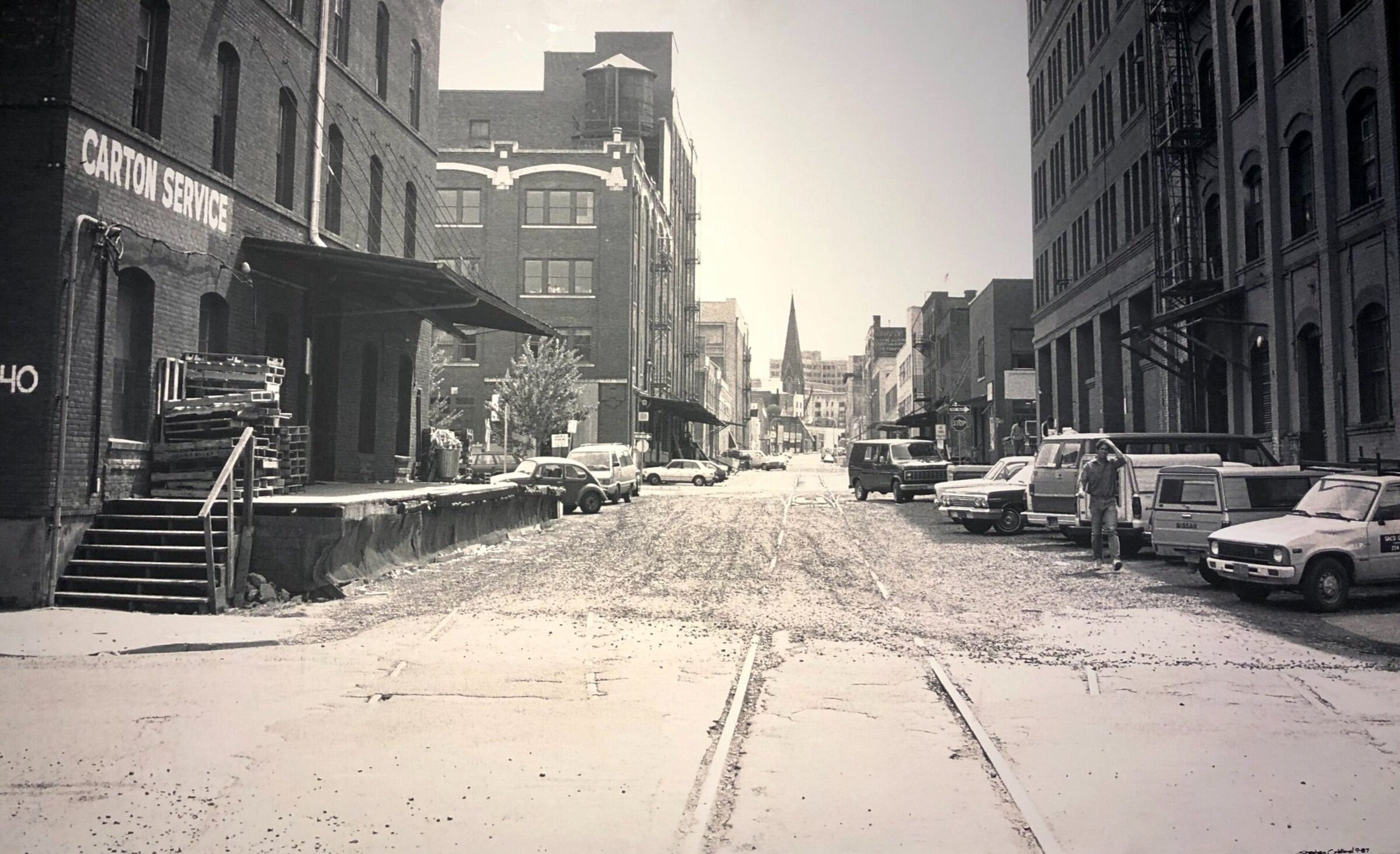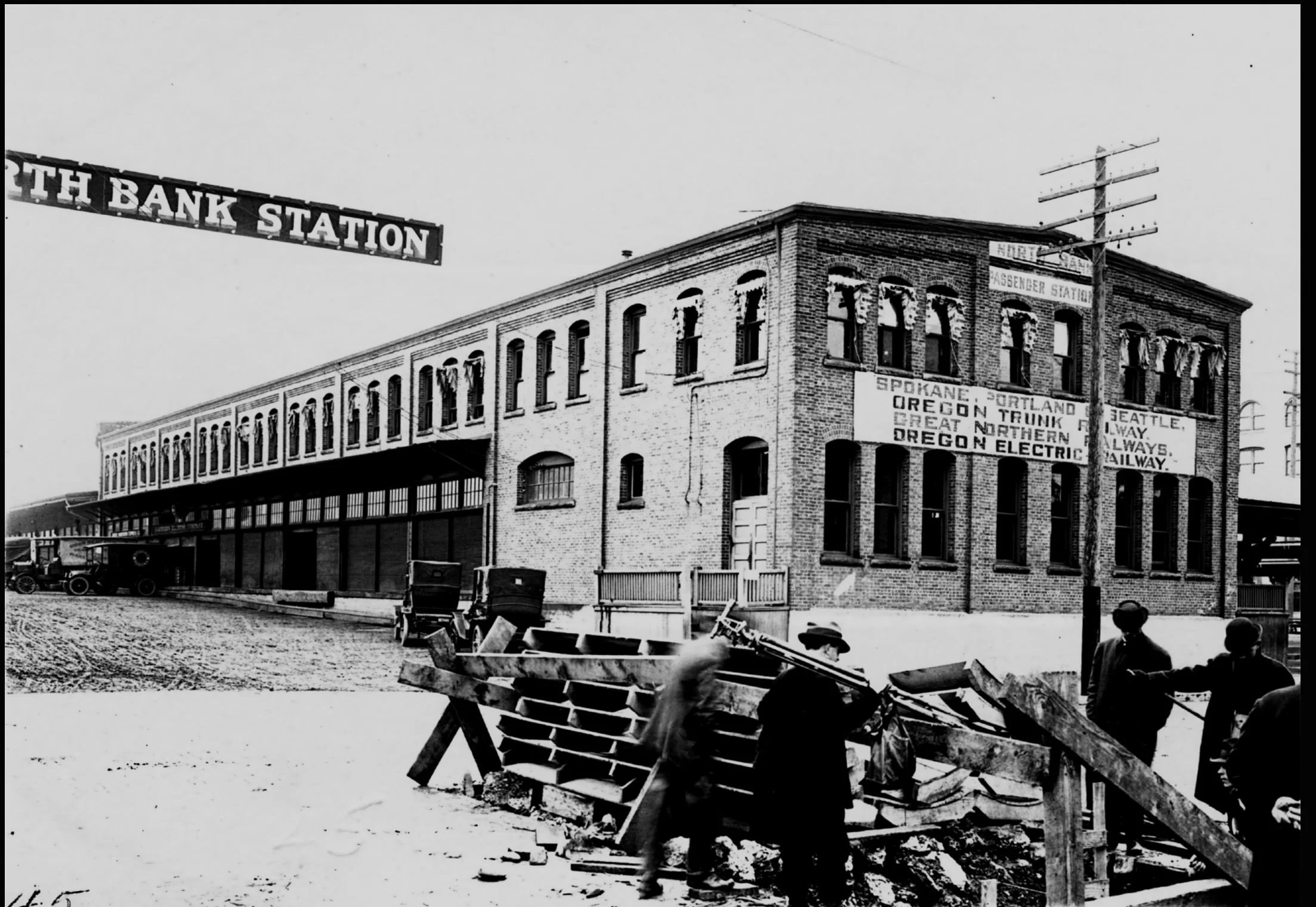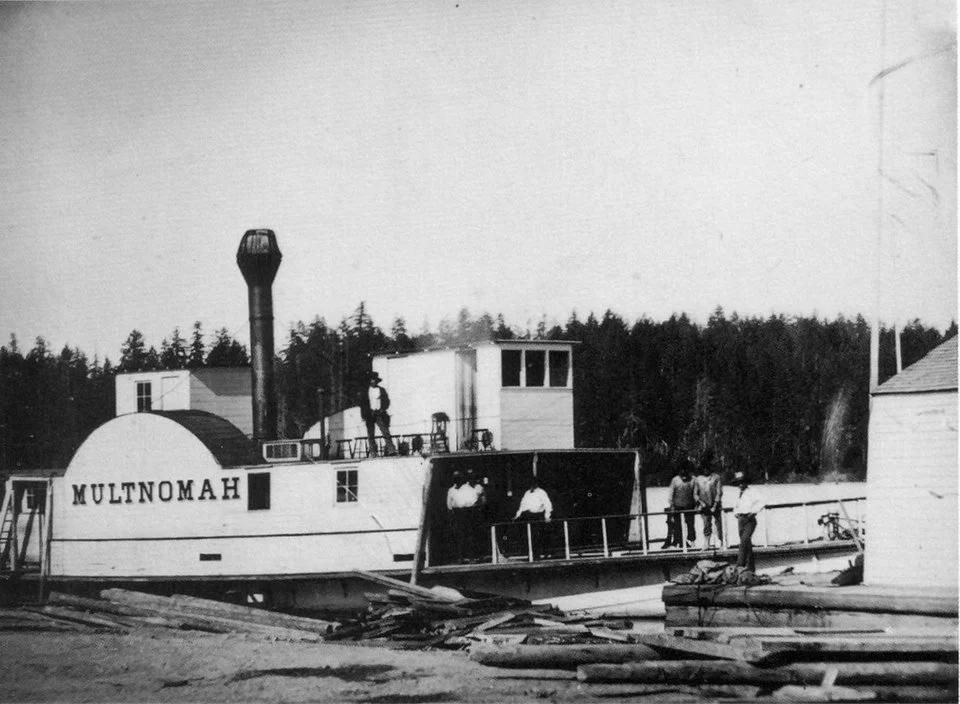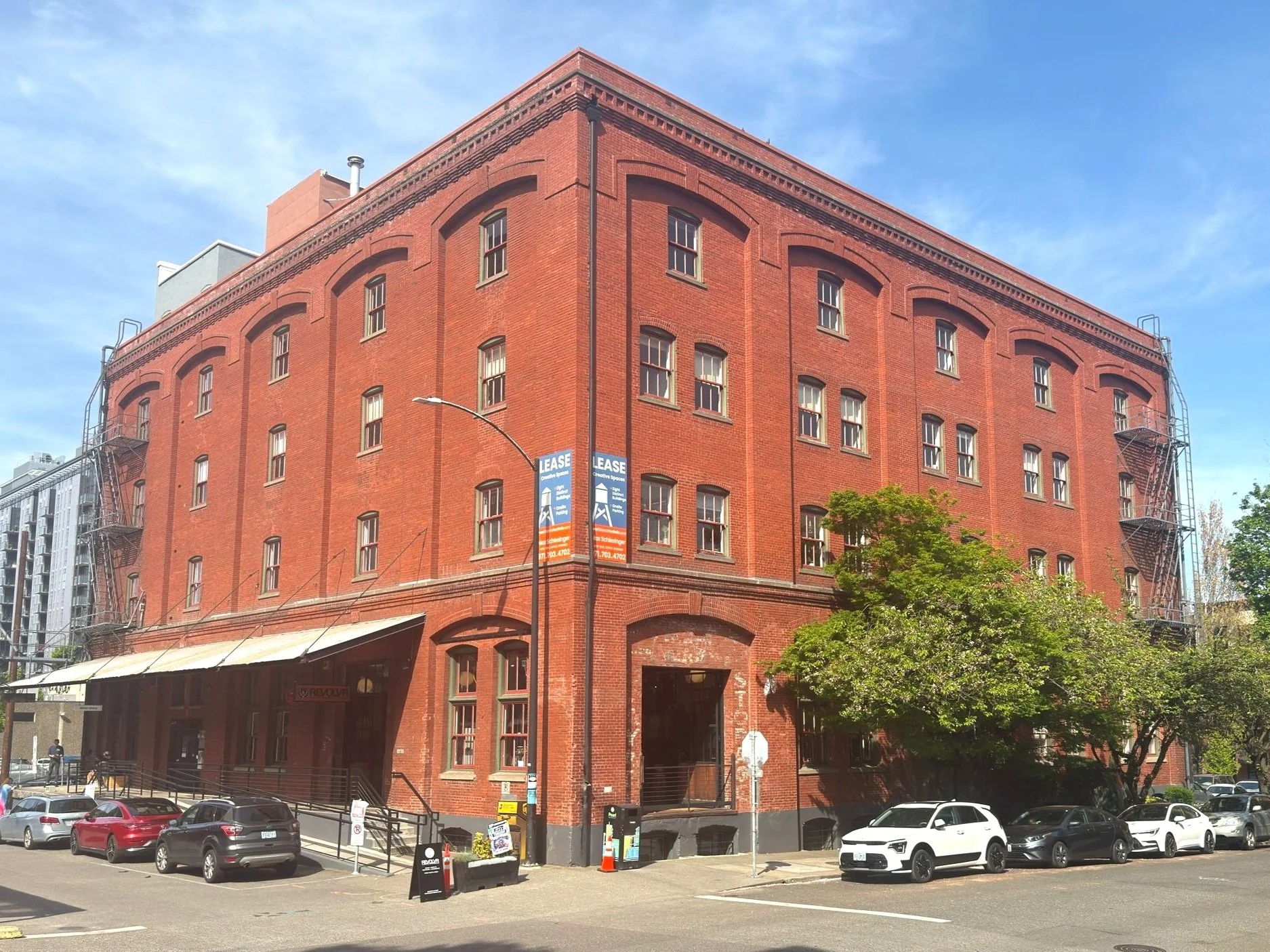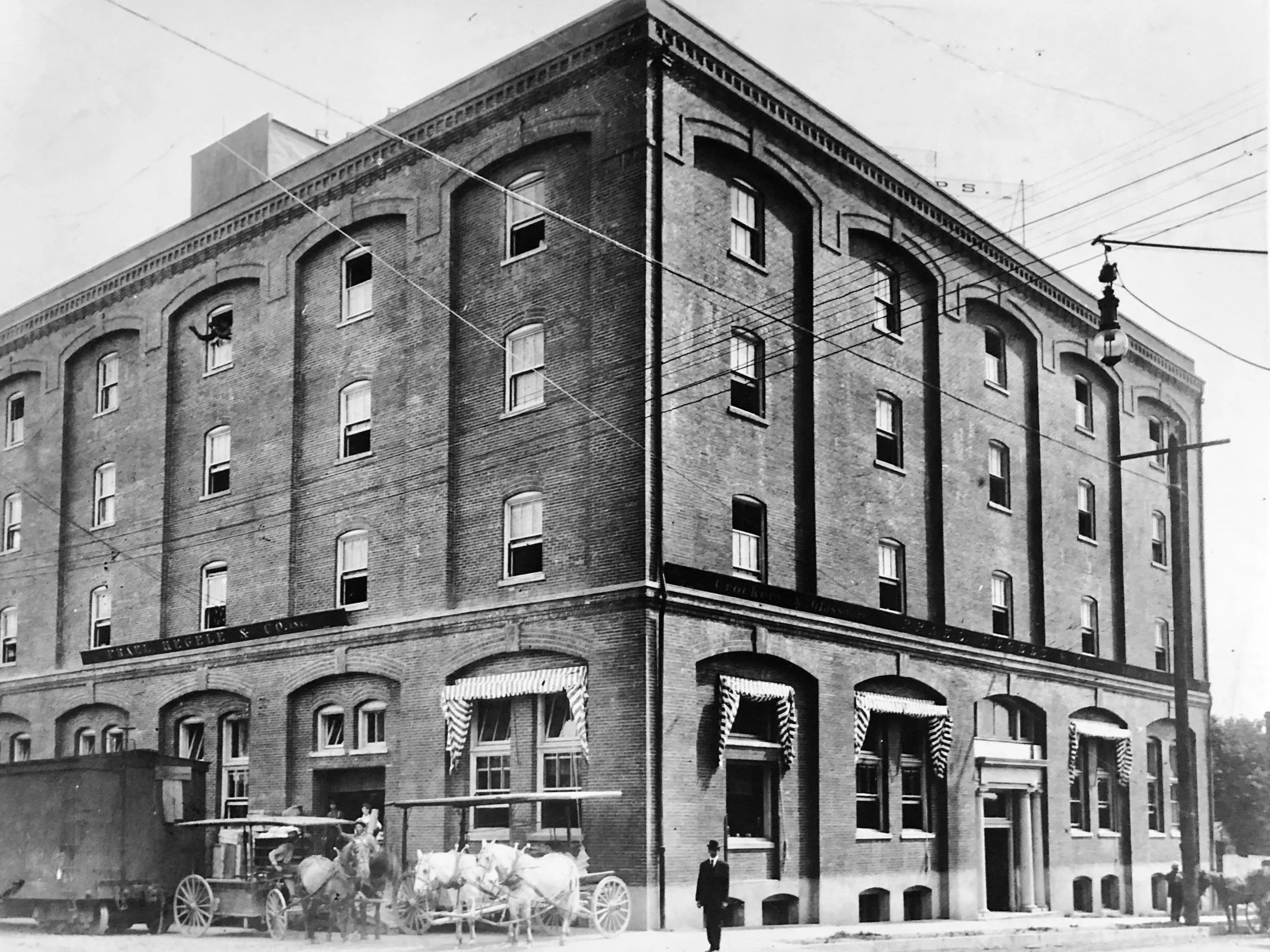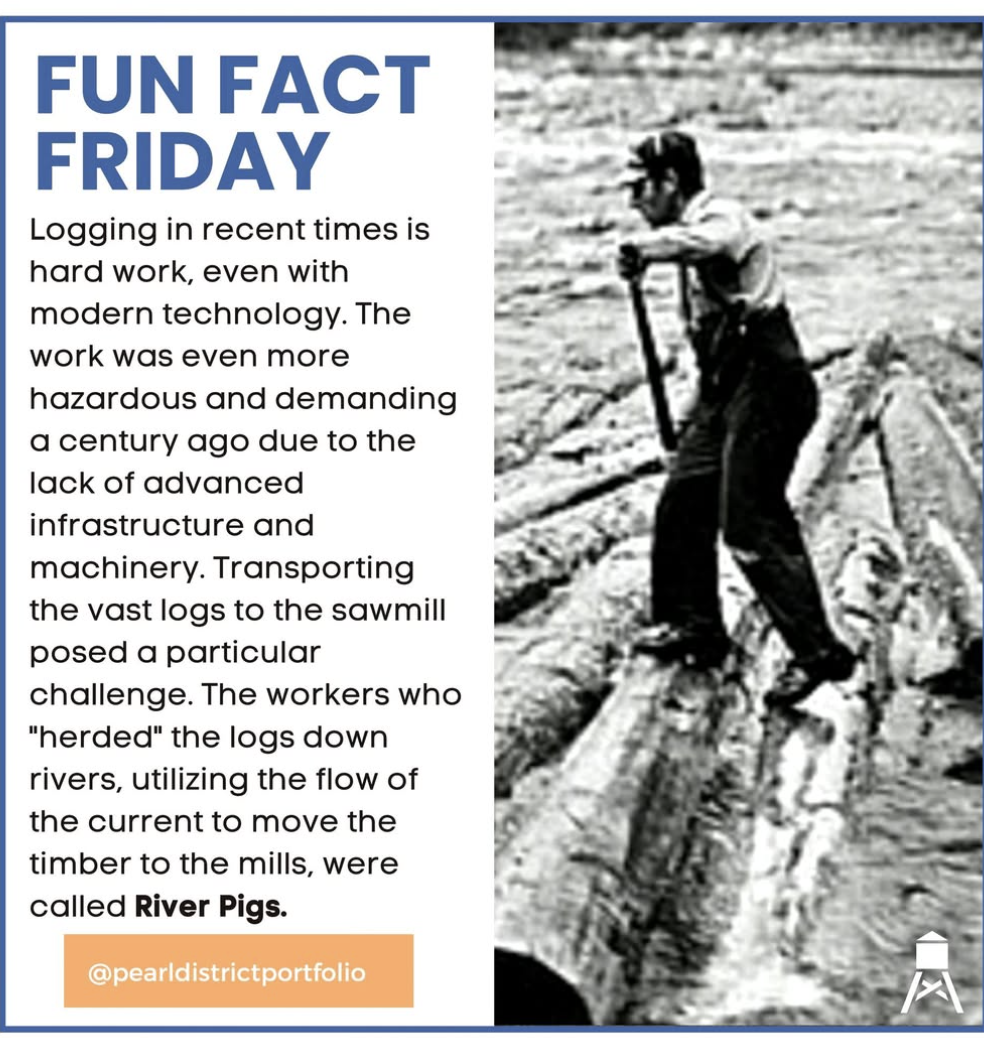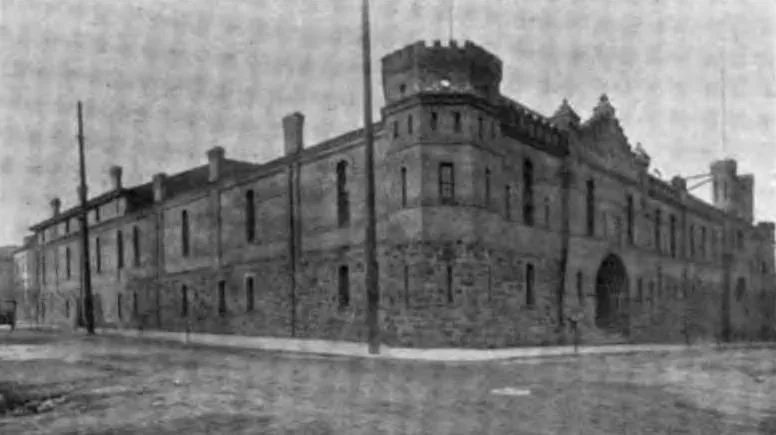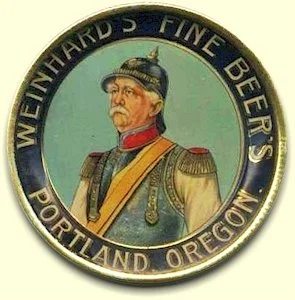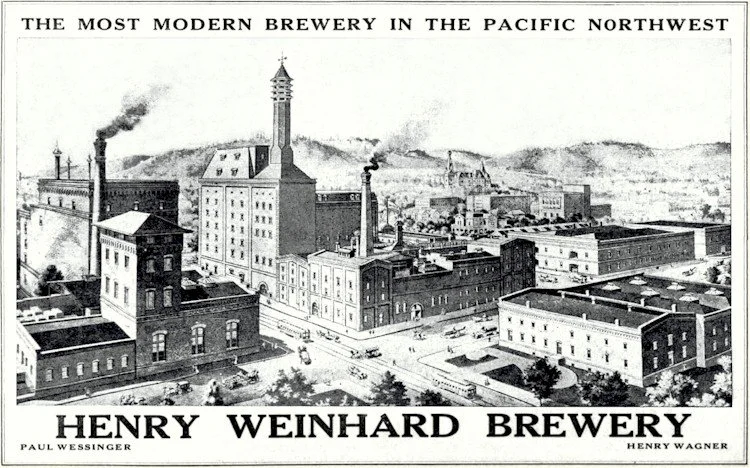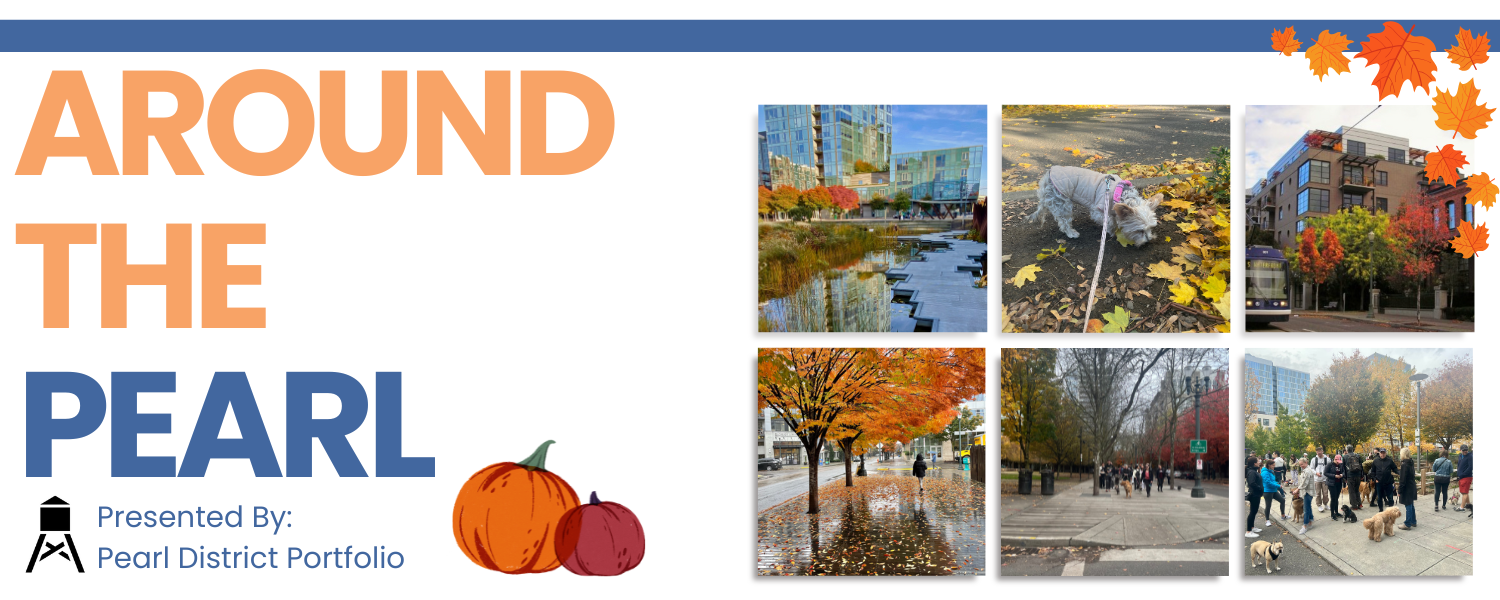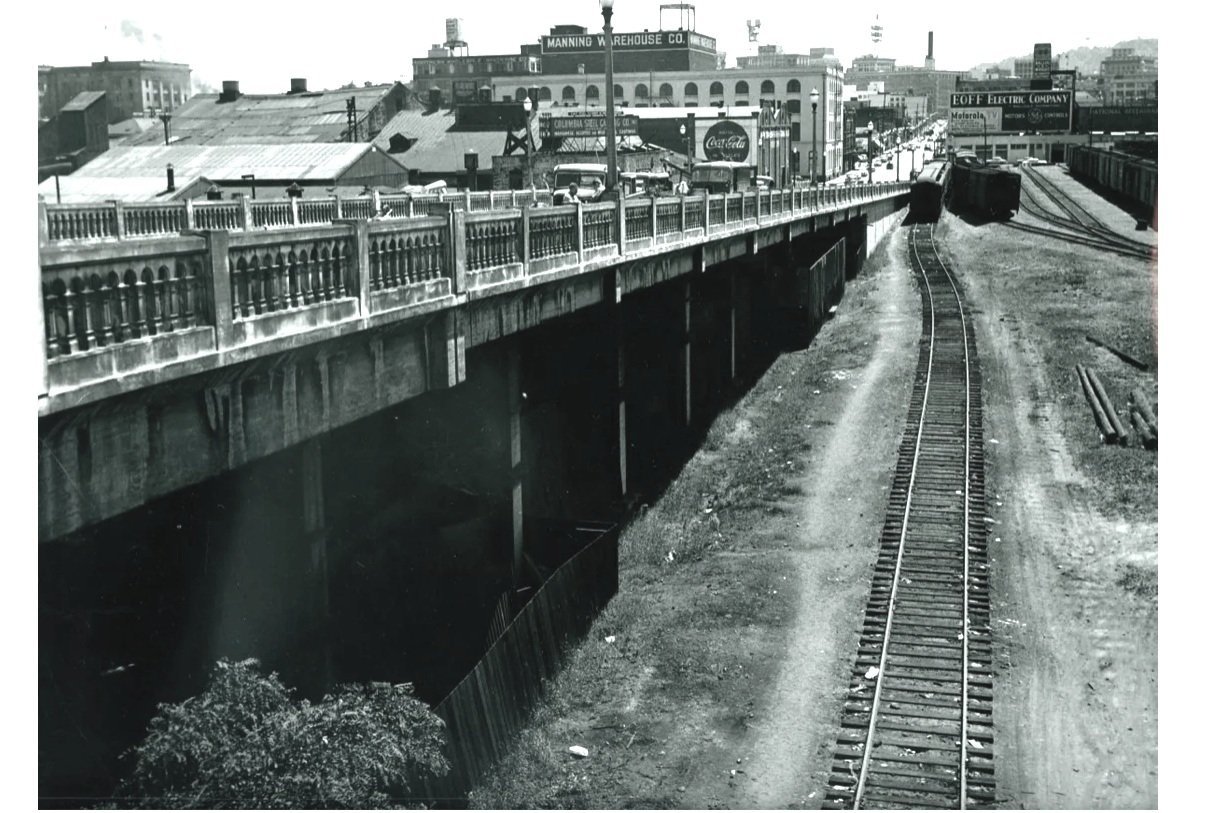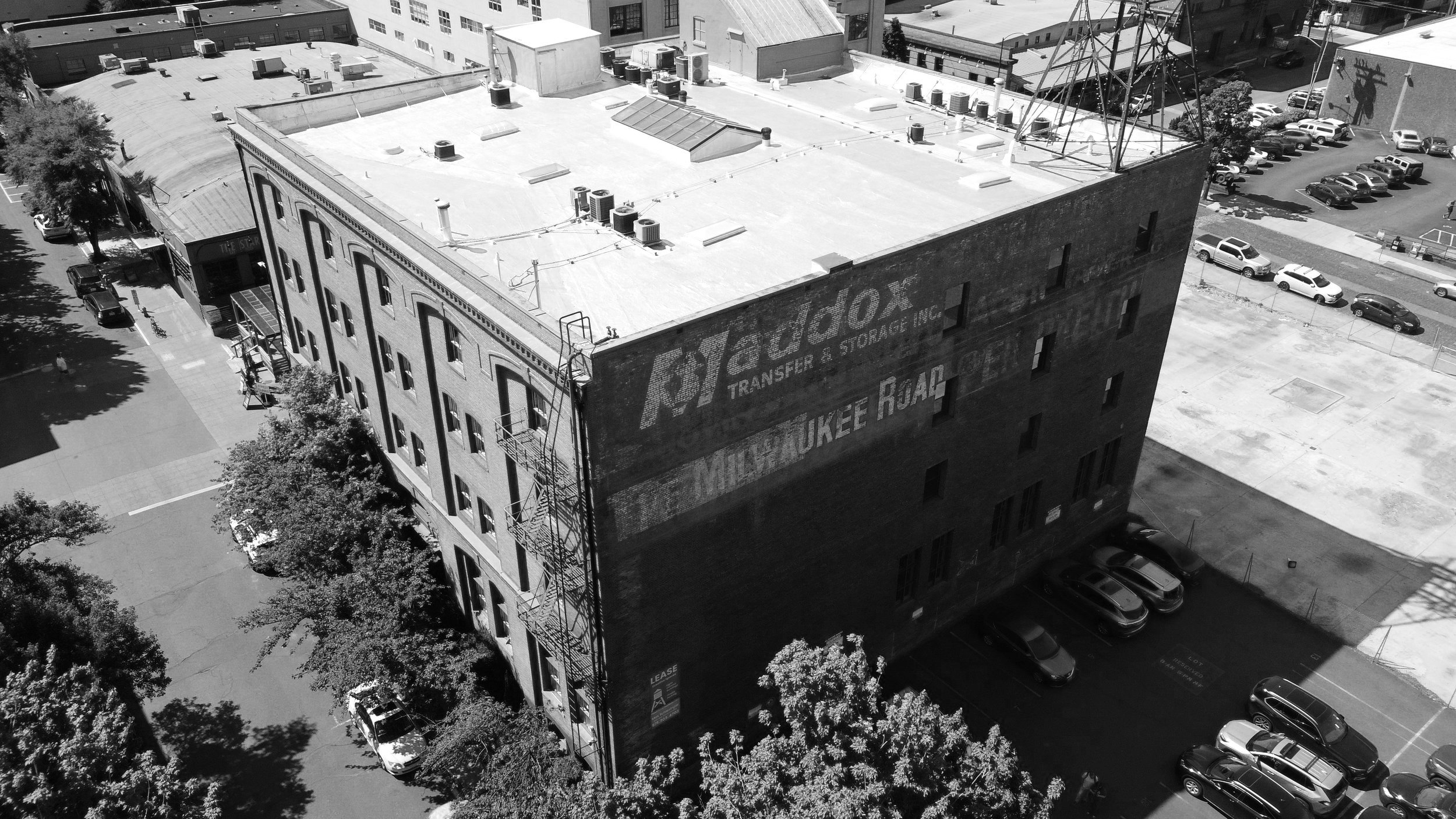
PORTLAND’S ORIGINAL CREATIVE DISTRICT
A Vision for a Vibrant and Creative Community from an Industrial Past
Image: 1987, Steve Cridland
It began with trade: the Pearl District was the city's hub for the West Coast rail network and ports, from which Portland draws its name. Primed by industry, the district developed into the Northwest Industrial Triangle, comprising rail lines and warehouses. Half a century later, the industrial backdrop gave way to art and creativity. Artists turned warehouses into studios, galleries, and businesses that supported the creative culture, and in 1986, 13th Avenue, from Davis to Johnson Street, officially received a historic designation from the city.
The 13th Avenue Historic District is a former warehousing district, located along the NW 13th Avenue railroad spur line, in an area referred to as the Northwest Triangle. Originally residential in character, the area developed as a warehousing and distribution center as a result of Portland's emergence as a world seaport, railroad development, and the explosive growth of the city after the 1905 Lewis and Clark Exposition.
Today, 13th Avenue continues to be a vibrant street of historic and modern buildings, drawing visitors, residents, and businesses to the dynamic energy of the Pearl District.
NW 10th & Johnson c 1925 (City of Portland Archives)
Echoes of a Gritty Past
Picture the Pearl District before the galleries and cafes—when it was a gritty mix of warehouses, wood-frame houses, and busy boarding rooms. In this 1925 photo, NW 10th and Irving bustled with early Portland life. By 1939, the wooden homes had vanished, making room for the industrial heart that would define the Pearl’s next era.
Johnson Street, 1925
Johnson Street is named for Arthur Harrison Johnson, who ran a meatpacking business. His company was first on Johnson Creek, which was rerouted underground, and then moved to what is now Johnson Street.
North Bank Station, 1917
Back in the day, North Bank Station was Portland’s ticket to everywhere—Chicago, Seattle, Astoria, and Southern Oregon—until World War I slowed things down. Passenger trains kept rolling until 1931, but today if you stand at NW 11th and Hoyt, the view is a whole different story. The old depot still stands, but the Pearl District around it has completely transformed.
1917, NW 11th and Hoyt (City of Portland Archives)
Hoyt street (the home of the Pearl District Portfolio’s Maddox and Maytag buildings) is named for Captain Richard Hoyt, who sailed to Portland in his steamship the Black Hawk, and would later steam up with Willamette in a vessel ironically called the Multnomah.
The Multnomah, 1853: Faber, Jim, Steamer's Wake -- Voyaging down the old marine highways of Puget Sound, British Columbia, and the Columbia River, Enetai Press, Seattle, WA 1985 ISBN 0-961-5811-0-7, page 38.
THE PEARL DISTRICT PORTFOLIO: A Part of Portland’s History
Major Anthony L. Davis 1851: City of Portland Archives
Wadhams and Kerr Building, 1917: City of Portland Archives
The Maddox Building: A Pearl District Landmark Through Time
The red-brick Maddox Building sits on a quarter block in the heart of the Pearl District. The four-story building, constructed in 1906, is listed on the National Register of Historic Places. The Maddox building's initial use was to serve the railroad, but as the railroad faded into history, the building transitioned to trade, as did many of the warehouses lining 13th Avenue. Maddox Transfer & Storage Inc. utilized the building for storage and services, and the name and logo of the Maddox Company remain painted on the building today.
Maddox Building: Apex Real Estate Partners
Maddox Building: City of Portland Archives
From Groceries to Storage
Downtown Self Storage – Davis Street
Long before it stored boxes and bikes, this historic spot was buzzing with barrels and crates. Built in 1917, the Wadhams & Kerr Building was home to one of Portland’s big wholesale grocery operations. Today, it’s part of the 13th Avenue Historic District—and a living reminder of the Pearl’s working roots.
Davis Street, home to a Downtown Self Storage location, is named after Major Anthony L. Davis (above), who was one of the first advocates for a public school system in Portland. In 1851, he also served as the first director of the Portland school system. He was appointed to the role of circuit Judge in 1858. His daughter also married David W. Burnside, after which Burnside Street was named.
Downtown Self Storage on Davis Street, 2025: Downtown Self Storage
The Pearl District: A History in Images
Thank you to Vintage Portland, Portland Archives, the Oregon Historical Society, and other amazing resources for the important work they do to keep Portland’s history within reach and available to share with our community.
The NW Lovejoy ramp once met the west end of the Broadway Bridge and then came down to grade level at NW 14th Avenue. The ramp, here looking east, and most of what we see in this 1939 photo, is gone, replaced by Pearl District development. Image: Portland Archives/Vintage Portland
River Pigs at work. Courtesy Oreg. Hist. Soc. Research Lib., 21760
Ode to Pearl District Businesses
The local River Pig Saloon honors the legacy of Portland’s early river loggers—“river pigs”—who braved the waterways to drive the city’s booming timber trade. What’s a River Pig? Connecting Past and Present in the Pearl District
First built in 1891 as the National Guard Armory Annex, the Armory became the headquarters of Portland’s theater scene when it was renovated in 2006.
By Angelus Studio, Kiser Photograph Company; Published for Barkalow Bros. News Service by R.A. Reid, 1914 - Portland, the metropolis and vicinity, illustrated, Public Domain, https://commons.wikimedia.org/w/index.php?curid=19130171
Image: Brewery Gems
Henry Weinhard kicked off Portland’s beer scene in 1862—and by the 1920s, his empire spanned two city blocks in the Pearl. Blitz-Weinhard kept the taps flowing until 1999. Cheers to a true original! Image: Morning Oregonian Jan.1, 1908
Images: Oregon Public Broadcasting
Pearl Portfolio History and More!
Street Art and History Merge in the Pearl District
Rafters and Ribbons: A New Home for Blu Dot in Portland by Brian Libby - Metropolis Magazine
History of the Pearl District – Vision that Came to LifeOregon Artswatch: Art review: Animal magnetism
Explore the Pearl: 2016 Pearl District Business Award Winners
Interested in learning more about the historic Pearl District Portfolio?
Welcome to the Pearl District—Portland’s original playground for creativity, culture, and city life.
Historic warehouses, bold brands, indie shops, epic eats, and art around every corner—this neighborhood buzzes with energy.
Read our Blog, sign up for the Pearl District Portfolio newsletter, keep up with Pearl events with #AroundthePearl, and connect with us on social media @around the pearl for #FunFactFriday.
Al Solheim - 1984 Downtowner Newspaper: The Northwest Triangle by Steve Hastings
The view is south on NW 9th from Johnson Street. What’s known today as the Jean Vollum Natural Capital Center, the building on the right was called Central Truck Terminal in 1936. Image: City of Portland Archives

1964 Broadway Bridge looking west. Image:Portland Archives/Courtesy of Image: Vintage Portland
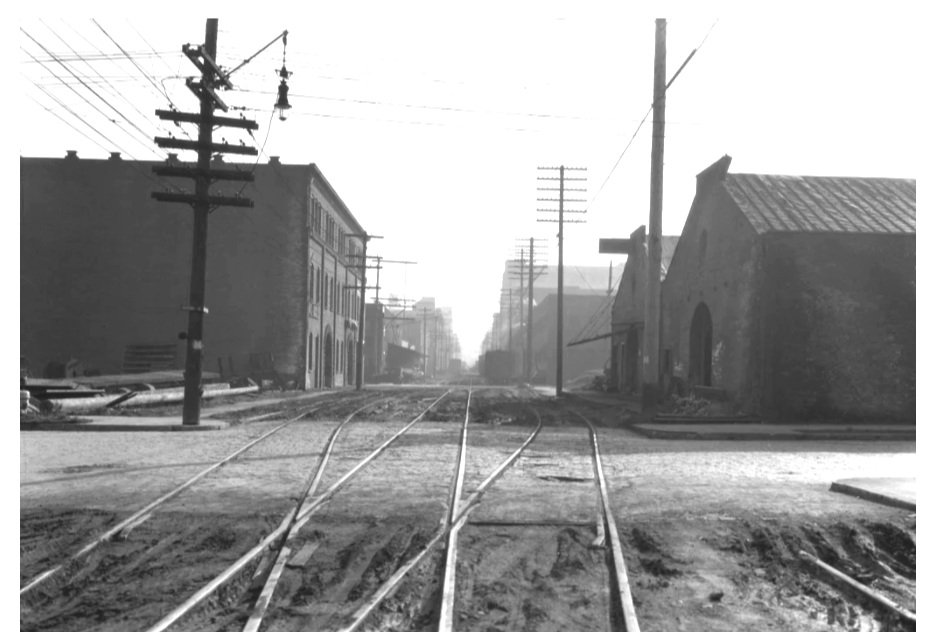
1930 - NW 13th Avenue at Lovejoy looking south. Industrial Northwest Portland was in the business of freight, storage, and other heavy industry Image: Vintage Portland
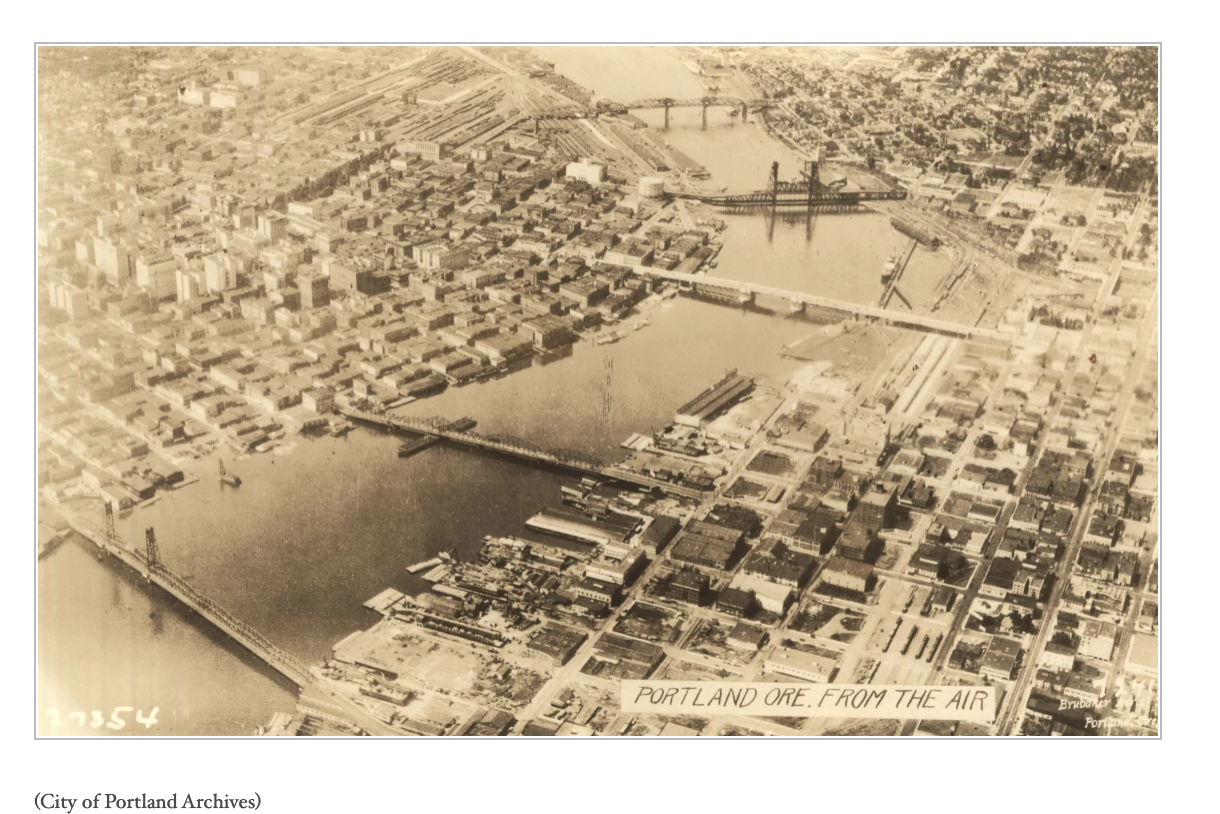
Portland (circa 1926 ) Image: Vintage Portland
1964 - Lovejoy St Viaduct: 10th Ave ramp looking southeast as bridge crews repair the expansion joints and handrails. Image: Portland Archives: AP/864
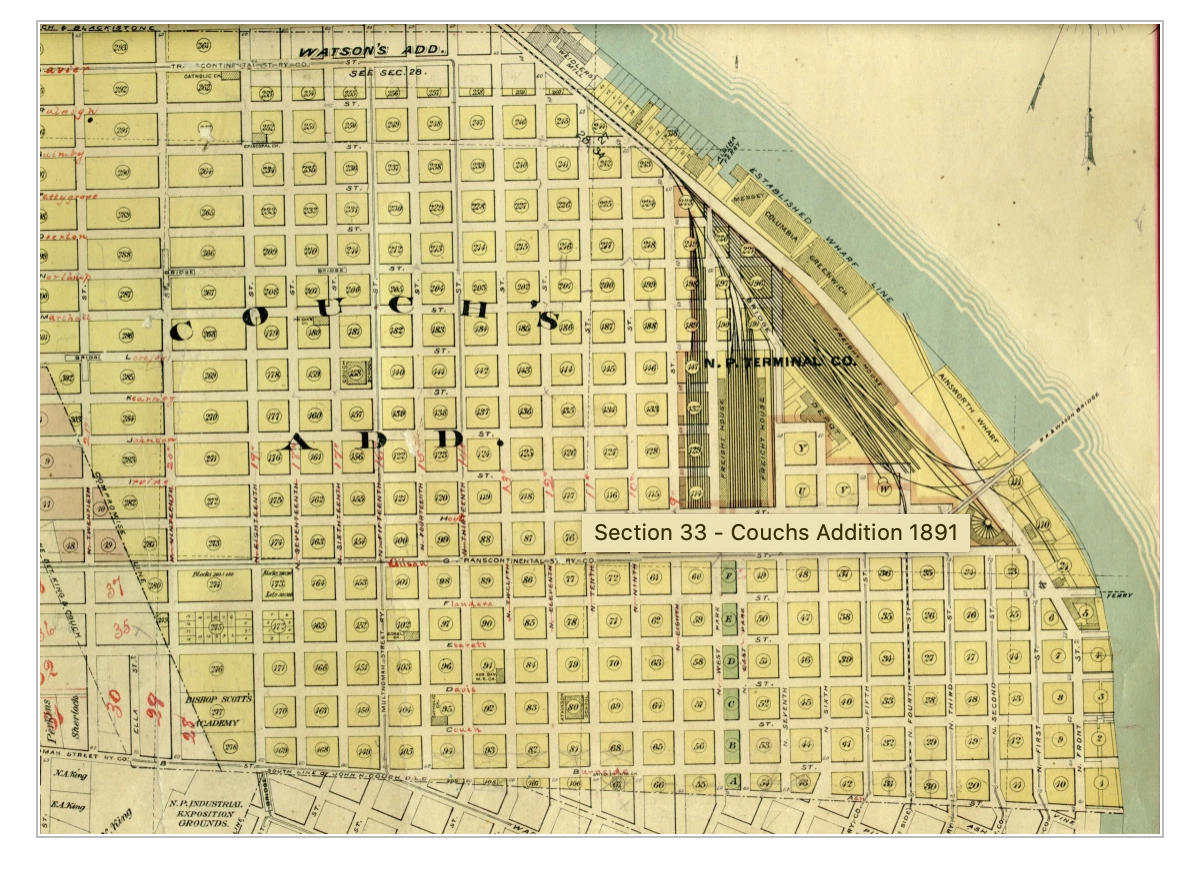
1891 Map of the Northwest Triange Image: City of Portland Archives
Broadway Bridge 1938 The Lovejoy Street ramp looking east with views of the Broadway Bridge, Steel Bridge, and Union Station. Image: Vintage Portland

1928- Northwest 14th & Lovejoy - Image: Vintage Portland
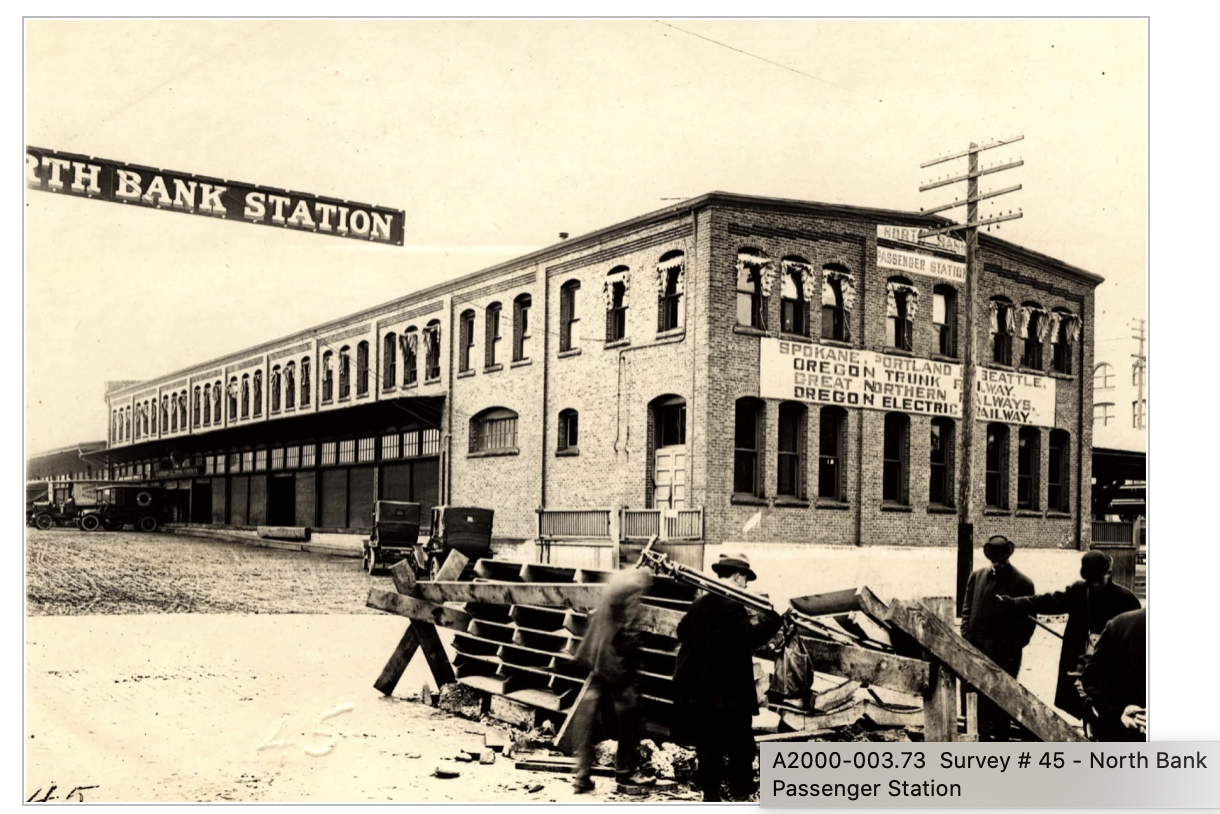
North Bank Station passenger depot. NW 11th and Hoyt in the Pearl District. Image: 1917. Image: Vintage Portland (Portland Archives)
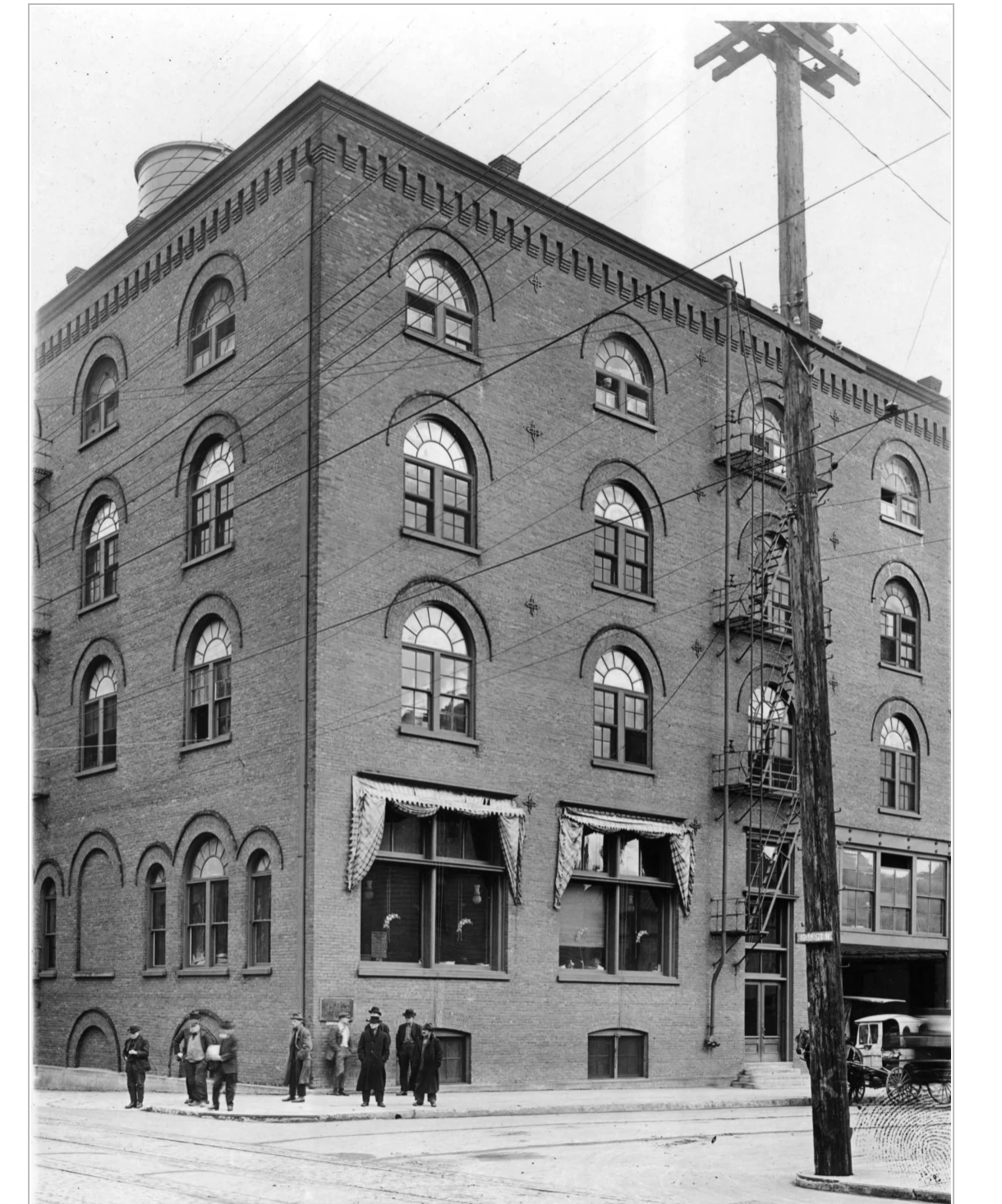
Pacific Coast Biscuit Co., 1917 . View is northeast on the corner of NW 12th and Davis; it’s now a parking garage. Image: Vintage Portland

Park Blocks 1900 Image: Vintage Portland
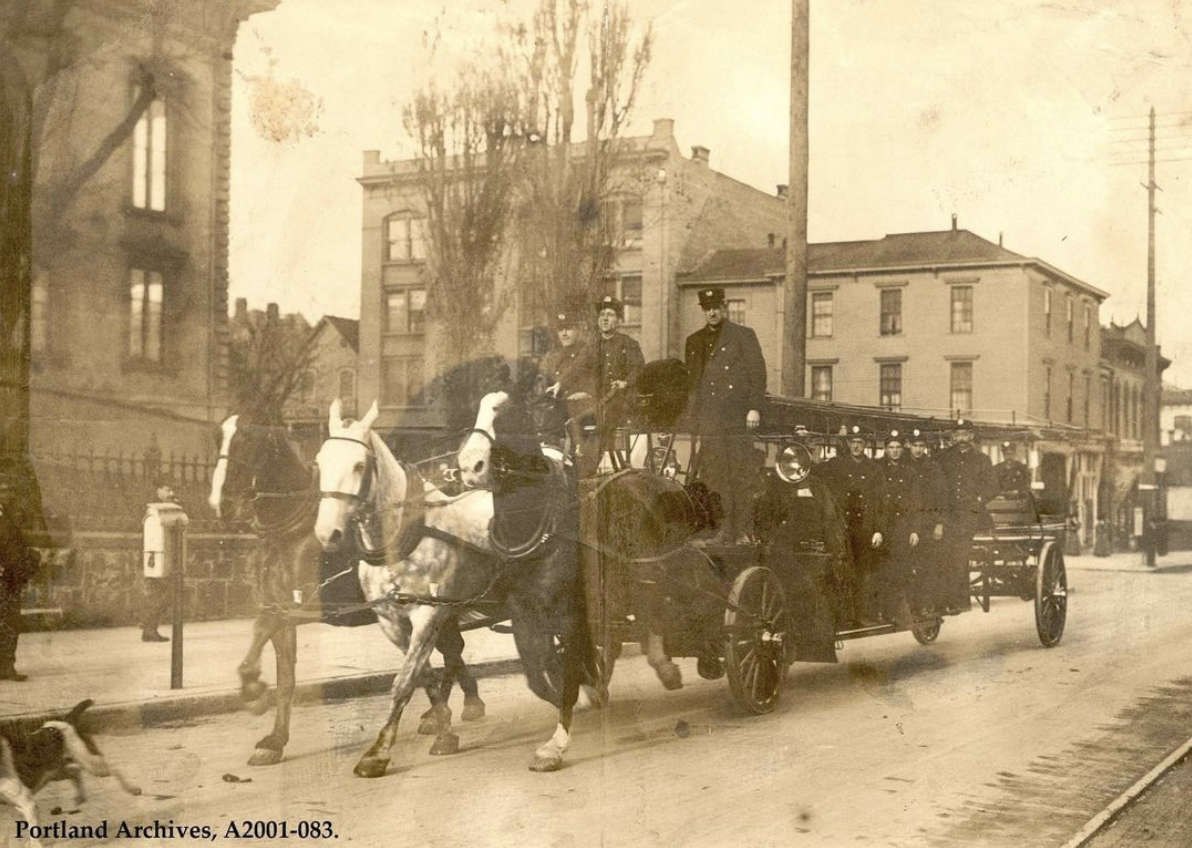
Fire Engine, 1899 Image: Vintage Portland

Wadhams & Kerr Building, now Downtown Self Storage Davis Street location Image: Vintage Portland


